Decorating with vintage fabrics – 8 ways to inject color, texture and heritage style into your space
From a small cushion to a feature wallhanging, vintage fabrics are the perfect way to bring unique personality and character to interiors

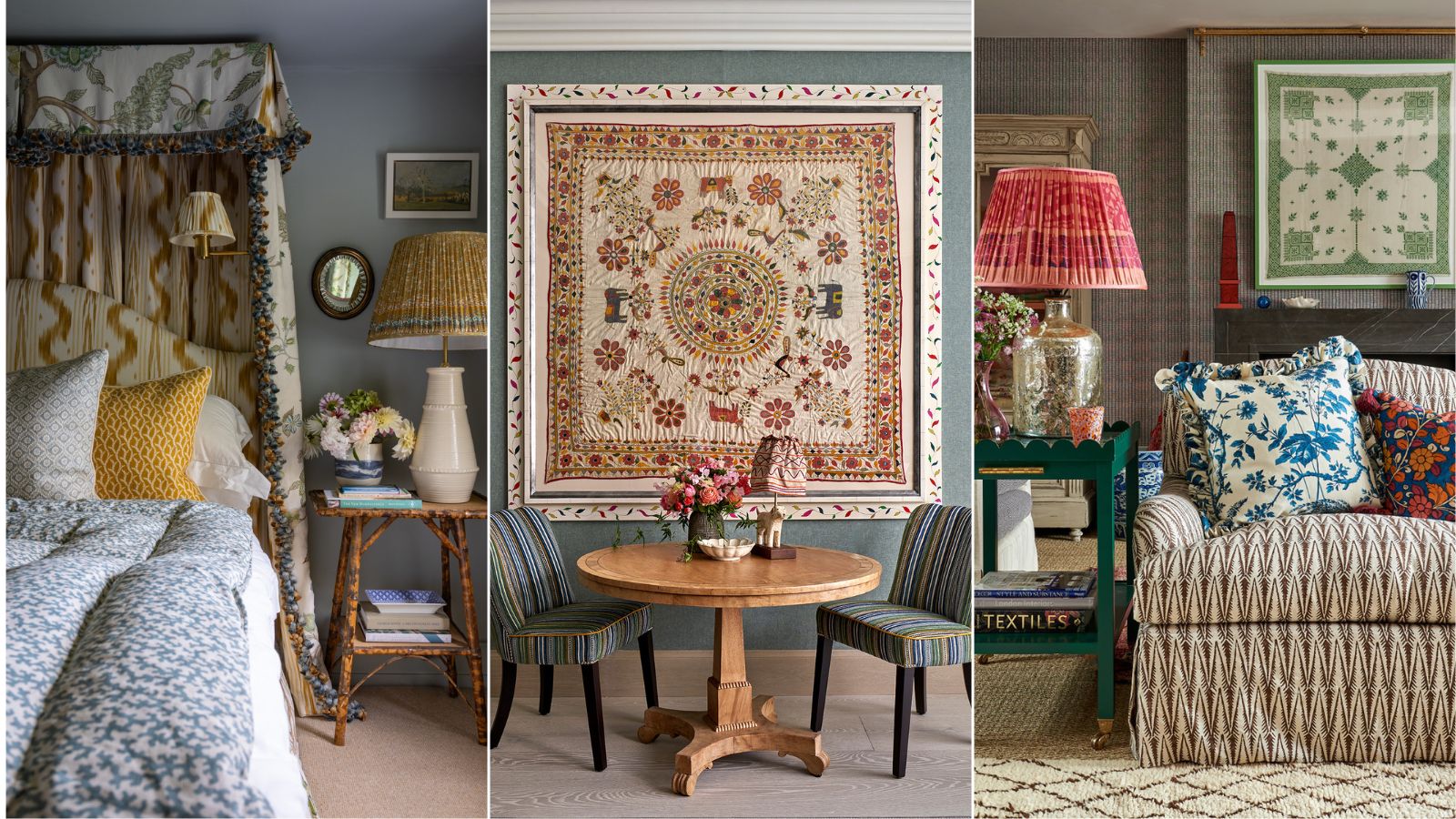
- 1. Layer vintage fabrics with modern prints
- 2. Use vintage fabrics over lampshades
- 3. Go for a new fabric in an archive print
- 4. Choose a fabric inspired by vintage textiles
- 5. Add color and texture with vintage fabric cushions
- 6. Hang vintage fabrics as wall art
- 7. Go for a vintage suzani bedspread
- 8. Create a rustic look with vintage linens
Decorating with vintage fabrics is a wonderful way to inject color, pattern and warmth into interiors. Antique textiles and vintage fabrics often display exquisite artistry and handcraftsmanship which make them perfect for creating bespoke pieces and bringing unique personality – they also evoke a sense of comfort and nostalgia.
Vintage fabrics and vintage-inspired prints are a go-to for interior designers looking to create timeless schemes, but they also work well alongside modern design elements to create characterful, layered spaces.
From curtains and seating to lampshades and cushions, there are lots of ways to incorporate vintage fabrics into your scheme and even the smallest of pieces can really add depth and interest to interior design. To find out more about the appeal of decorating with vintage fabrics and how best to use them we spoke to the interior design experts to get their tips and insights.

Why decorate with vintage fabrics?
From tapestries to ticking and Indiennes to Ikats, vintage fabrics are a continual source of inspiration for interior designs and can be used in all sorts of ways from lampshades and bedspreads to wallhangings and framed artwork. Not only is there a rich archive of historic designs available, authentic antique and vintage fabrics display a level of craftsmanship inimitable by modern designs, thus allowing you to create something completely unique imbued with the stories and markings of age.
‘They create a richness of color and pattern and add an extra layer of texture. Using a one-off vintage piece allows you to create something entirely bespoke for a particular space,’ says interior designer Penny Morrison. ‘It is also good from a sustainability perspective.’
When decorating with antique textiles, mixing antique fabrics with modern pieces helps achieve a ‘lived in’ feeling to interiors as if they have organically evolved over time.
‘Nothing should feel too contrived, rather it should be playful, captivating our interest wherever we look. To create this, consider architectural salvage and antique fabrics, says Henriette von Stockhausen, founder of VSP Interiors . 'They can add that sense of connection and lived-in feel that we all crave without looking too staid. At the same time, they can also be easily mixed into a more contemporary interior if you are unsure about antique furniture.’
Design expertise in your inbox – from inspiring decorating ideas and beautiful celebrity homes to practical gardening advice and shopping round-ups.
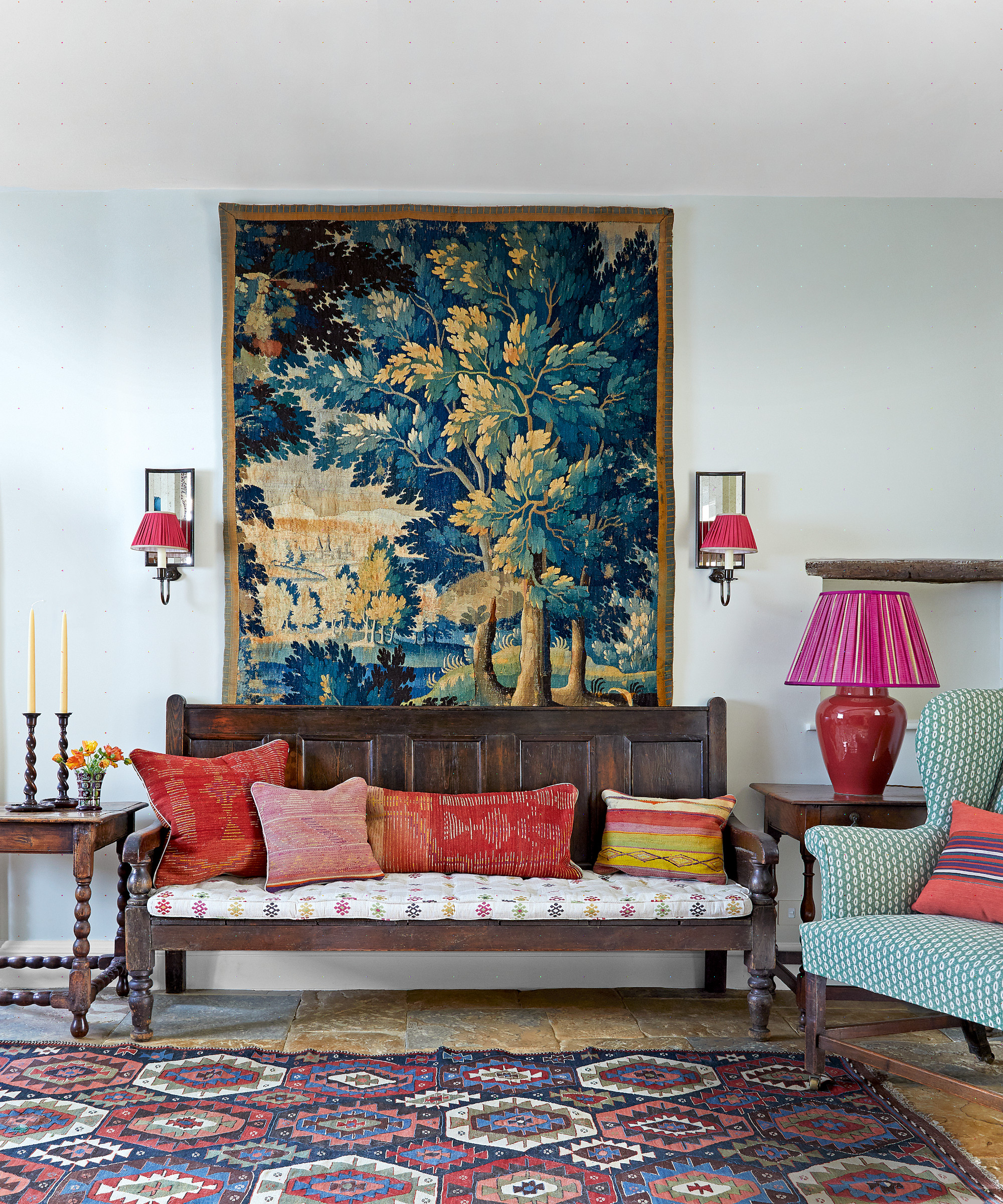
Alongside their decorative appeal, vintage fabrics are a brilliant way to create a feeling of comfort and nostalgia in our homes, something that many of us crave in this fast-paced digital world. In fact, they're just one of the many vintage trends making a comeback.
‘People seek timelessness and nostalgia in their homes. Harking back to designs of the past is a great way to create a timeless interior, reconnect with memories, and create an intimate, comfortable space, says Rebecca Craig, lead designer at Sanderson.
Authentic vintage fabrics can easily picked up from flea markets and antiques fairs. Online marketplaces such as 1stDibs, Panamo and eBay are great places to source antique furniture and vintage textiles.
What are the drawbacks of decorating with vintage fabrics?

Authentic vintage fabrics are hugely desirable for their bespoke and aged charm, but they can be problematic when it comes to decorating. Vintage fabrics are often available only in small quantities or in irregular lengths and sizes which can make it tricky to use them for long drapes and large upholstery projects.
Their quality and condition can be variable, too. They often come with signs of age and their colors can become faded over the years due to exposure to sunlight. ‘The downside of course is that while they were beautiful they are also often not very strong,’ says Caroline Inchyra, founder of fabric brand Inchyra. It was partly this that led Caroline to develop her own range of vintage-inspired linens with aged finishes.
Can you use vintage fabrics for upholstery?
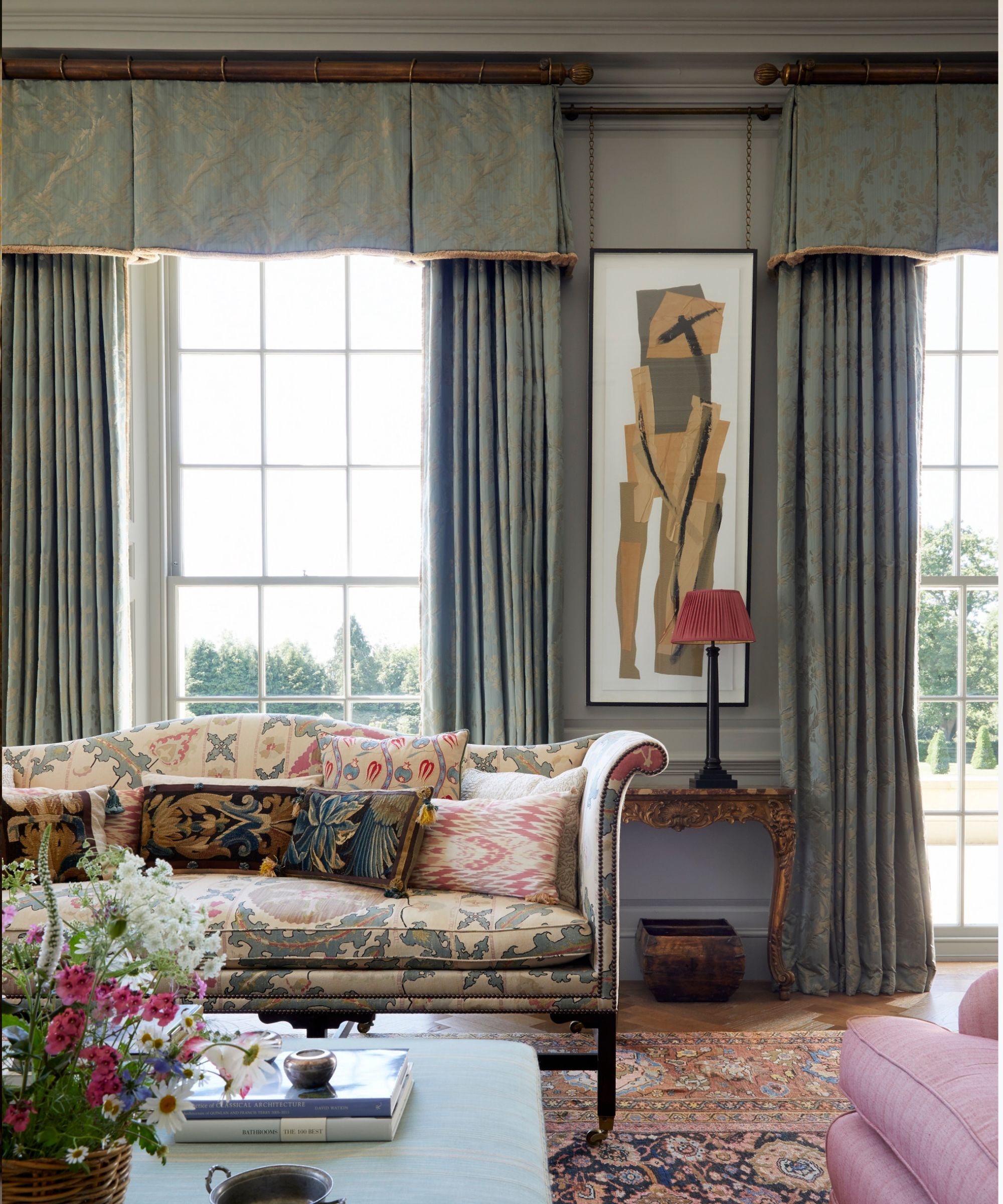
Having furniture upholstered in antique and vintage fabrics is a fabulous way to create a unique statement in a room. Large quantities of vintage fabrics can be hard to source, so smaller pieces are often a better option.
‘I would probably use the vintage piece for cushions or a small chair – preferably an occasional chair that isn’t often used for actually sitting in! Even small pieces like these can set the tone for a room scheme and provide a platform from which the rest of the scheme develops,’ says Caroline Inchyra.
If you’re thinking of getting seating covered in vintage fabrics then the upholsterer will need to know the composition of the fabric to check that it is suitable. 'Customers can have any antique fabric on their upholstery as long as they are able to tell us what the composition of their textile is. We have to have this information for fire regulation reasons,’ explains Andrew Cussens, CEO and Design Director of Sofas & Stuff.
You'll also need to take into account the strength and durability of the fabric. In order to be suitable for use over upholstery fabrics need to have a Martindale or rub count of at least 15,000.
From cozy cottage decor ideas to head-turning maximalist looks, these ideas and expert tips for decorating with vintage fabrics are guaranteed to inspire.
1. Layer vintage fabrics with modern prints
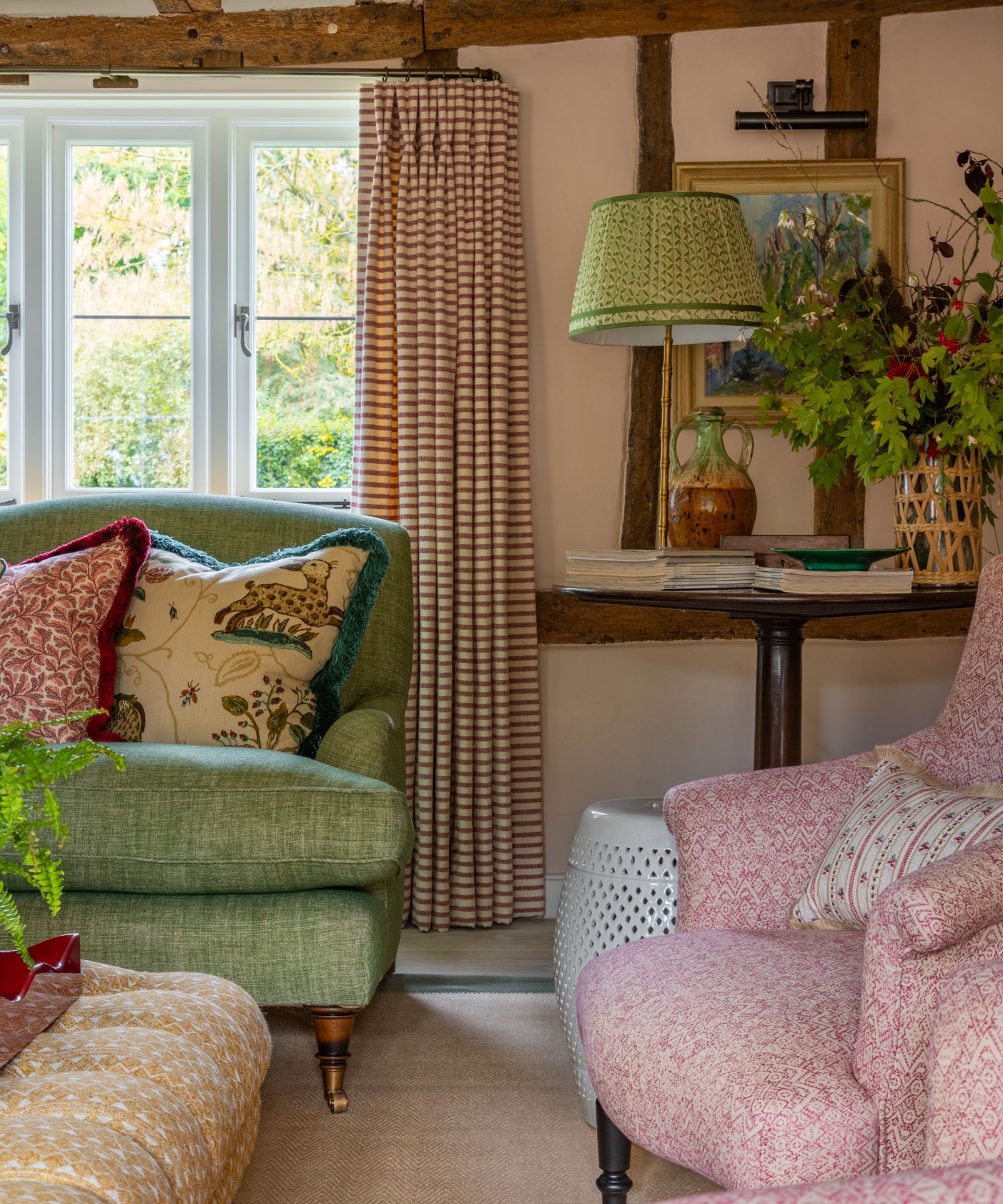
When decorating with vintage fabrics layering is the key say the experts, especially in rooms that you want to feel relaxing and welcoming such as living rooms and bedrooms. They also work wonderfully in kitchens and bathrooms to help soften hard surfaces.
'We love to mix prints. We always start with the hero print such as a large-scale floral that has all the colors that we have in the room. Then we build on top of that mixing in geometrics, squiggles or small-scale fabrics in complementary colors,' explains interior designer Sean Symington.

'As a general rule designers will often choose quite a strong design as a starting point,' adds Caroline Inchyra. 'One of the issues with vintage and antique fabrics is that often there is not very much of it so a good idea is to use it for smaller items that can make a scheme pop.'
While mixing up vintage-inspired prints can be extremely effective, it's important pay attention to the base cloth of the designs say designers. ‘Always make sure the base cloth colors are similar. I think that's important. Sometimes, if the design is printed on to a base cloth that is too white and the rest of the fabrics are more yellow, it doesn't really work. The base material matters,’ says Sean Symington.
2. Use vintage fabrics over lampshades

Vintage fabrics often come in small quantities, but if you love a fabric don’t despair, as it can easily be made up into a beautiful statement cushion or lampshade. ‘Lampshades are a great way to showcase vintage textiles because you don't need that many meters,’ says Sean Symington. ‘For a recent project, I had some Samarkand fabric made into a beautiful lampshade.’
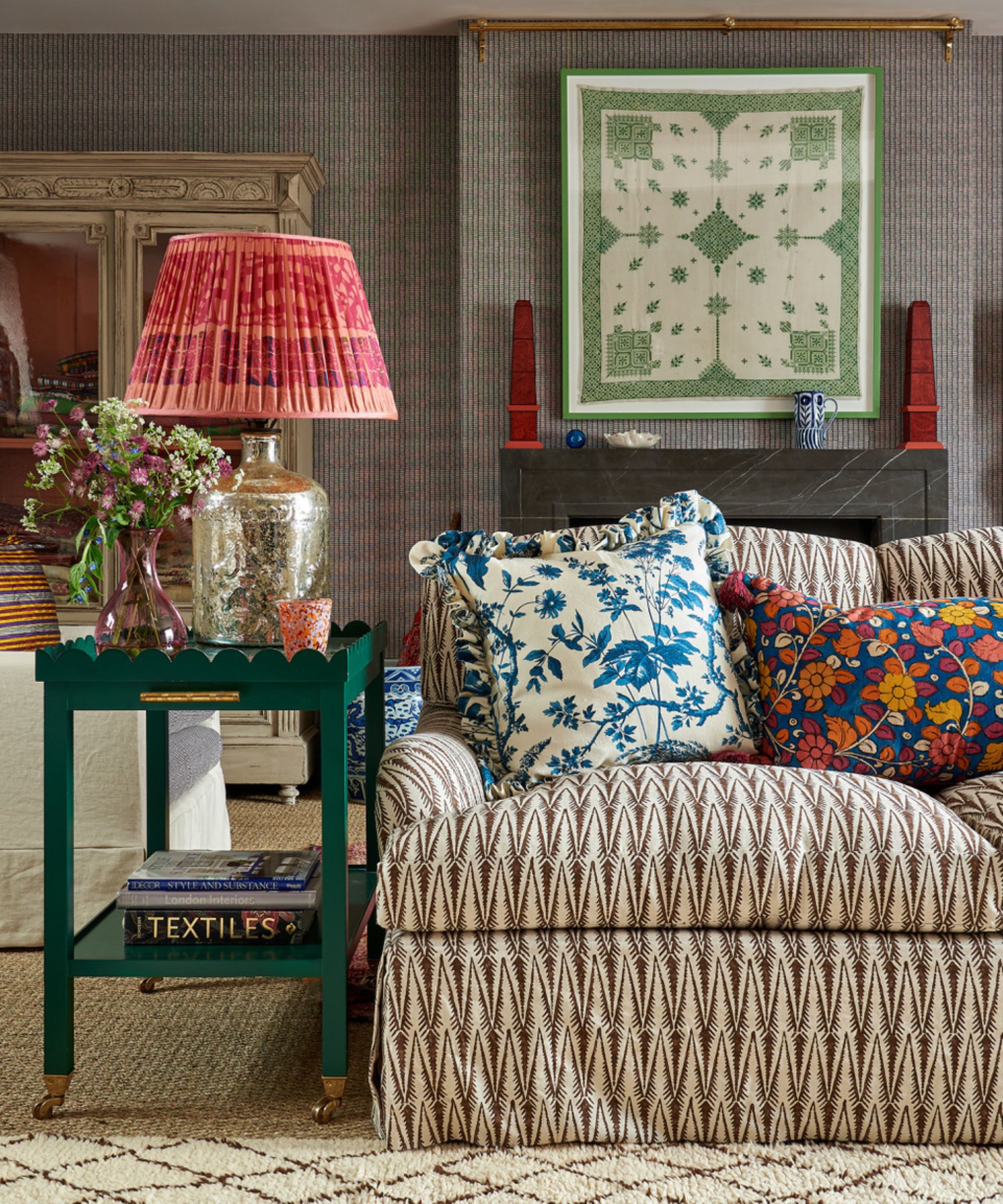
Interior designer, fabric and homeware designer Sarah Vanrenen creates lampshades made from vintage saris which are perfect for layering with other prints as part of a maximalist living room scheme or try them on table lamps in a neutral bedroom scheme for a welcome pop of color.
'Years ago, when I used to create more neutral interiors, I was always looking for ways to incorporate an unexpected burst of color and would add texture and bold-colored accessories in cushions, artwork and rugs. This is where our new lamp collection was born. Another way to punctuate a room and a way of bringing in shape and color.'
3. Go for a new fabric in an archive print

Authentic vintage fabrics can be difficult to source and come in limited lengths but luckily there are a wide array of new fabrics in archive designs available which capture the spirit of a look or era whilst offering all the practical benefits of modern fabrics.
Over the past decade, many companies have launched refreshed versions of archive and vintage designs to complement contemporary schemes. Taking inspiration from originals, fabric designers are reviving designs in new colorways, materials and scales perfect for integrating into 21st-century homes.
Fabric House Sanderson, originally founded in 1860, offers a large array of its original fabric prints which are synonymous with the classic English country look. Alternatively, try one of their reworked designs if you're looking for a fun twist on tradition.
'My favorite designs have to be Abbeville, Lakeland Paradis, or Caverley. Perhaps this is because they are all drawn from the archive, deriving from 19th-century hand-block prints,' says Sanderson's lead designer, Rebecca Craig. 'I love the charming and classically English look that these designs convey, where the making is part of the creative process and the design itself.'
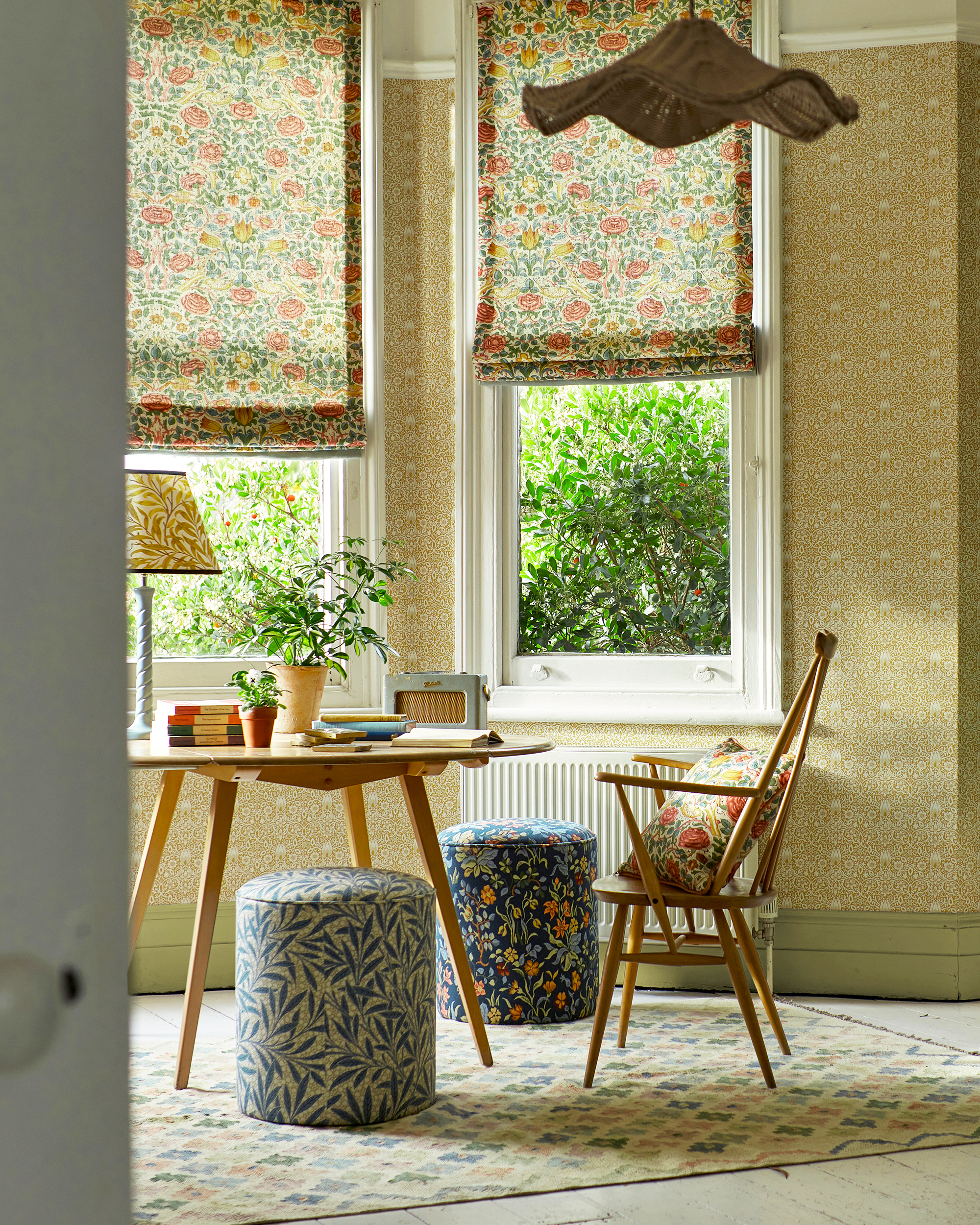
The nature-inspired designs of William Morris and other designers associated with the Arts & Crafts movement have enjoyed timeless appeal over the years and are still available today. Since they were first designed for fabrics in the late 1800s, the prints from Morris & Co. have continued to endure as the brand has continually evolved and revived the designs over the years, combining heritage inspirations with contemporary colorways and design. These prints from the Emery Walker's House collection look lovely layered as part of a timeless kitchen diner.
4. Choose a fabric inspired by vintage textiles

A sofa covered in a beautiful heritage print can make a wonderful focal point in a neutral living room. While antique fabrics look beautiful, they are not always in the best condition, and quantities are limited, instead, why not go for a modern fabric which draws on the textile traditions?
'Antique textile designs have stood the test of time and for generations, they have been loved and cherished, which is a testament to their undying appeal,' says Andrew Cussens, CEO of Sofas & Stuff. 'We often play around with designs, changing scale and color, or even taking a tiny section of a textile and turning it into a whole design. But my favorite design comes straight from the archives, and the best colorway in my opinion, is the original – Paisley Splendour in Rouge.'
Pictured is a classic sofa covered in the Tree of Life velvet which takes inspiration from an 18th-century bed hanging. A popular motif in Indian textile traditions, the flowering tree of life design is reminiscent of the beautiful chintz fabrics from the Coromandel Coast of southeastern India. To add an extra decorative flourish and create real wow factor why not add some vintage-style fringing?
5. Add color and texture with vintage fabric cushions
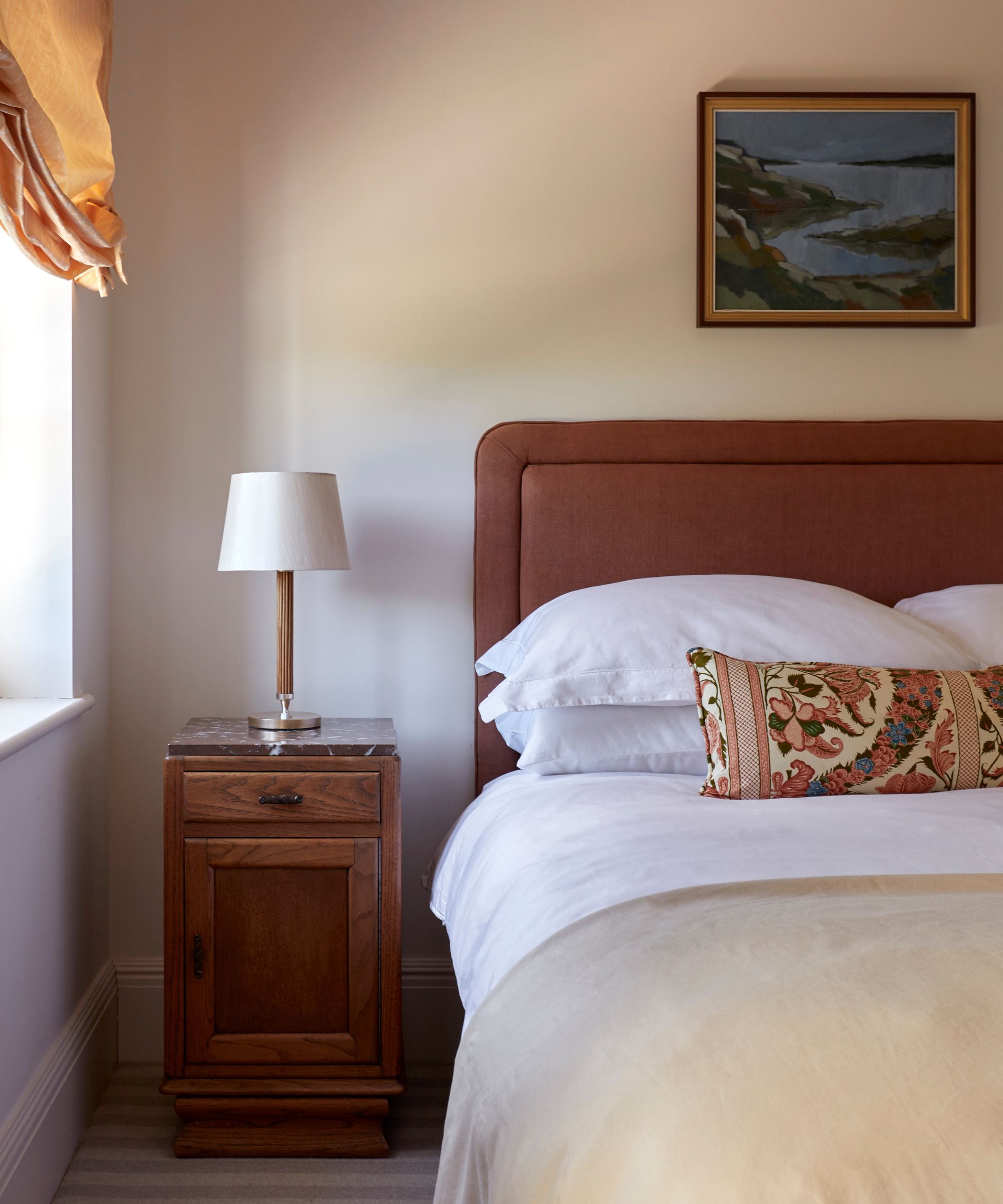
Simple scatter cushions in vintage fabrics bring a welcome dose of color and pattern to otherwise muted schemes. 'We love to hoard off-cuts from eBay or Haines they’re often perfect sizes for blinds without spending a fortune,' says Charlie Tilbury, co-founder of Penrose Tilbury. 'Less than 1m of fabric is enough for a nice big lumbar cushion - they make a real statement on the bed and often pull a whole scheme together,' adds co-founder, Rose Hanson. 'Don't worry too much about it all matching, often if the fabric has just a hint of a color used in the overall scheme, it works.'
6. Hang vintage fabrics as wall art
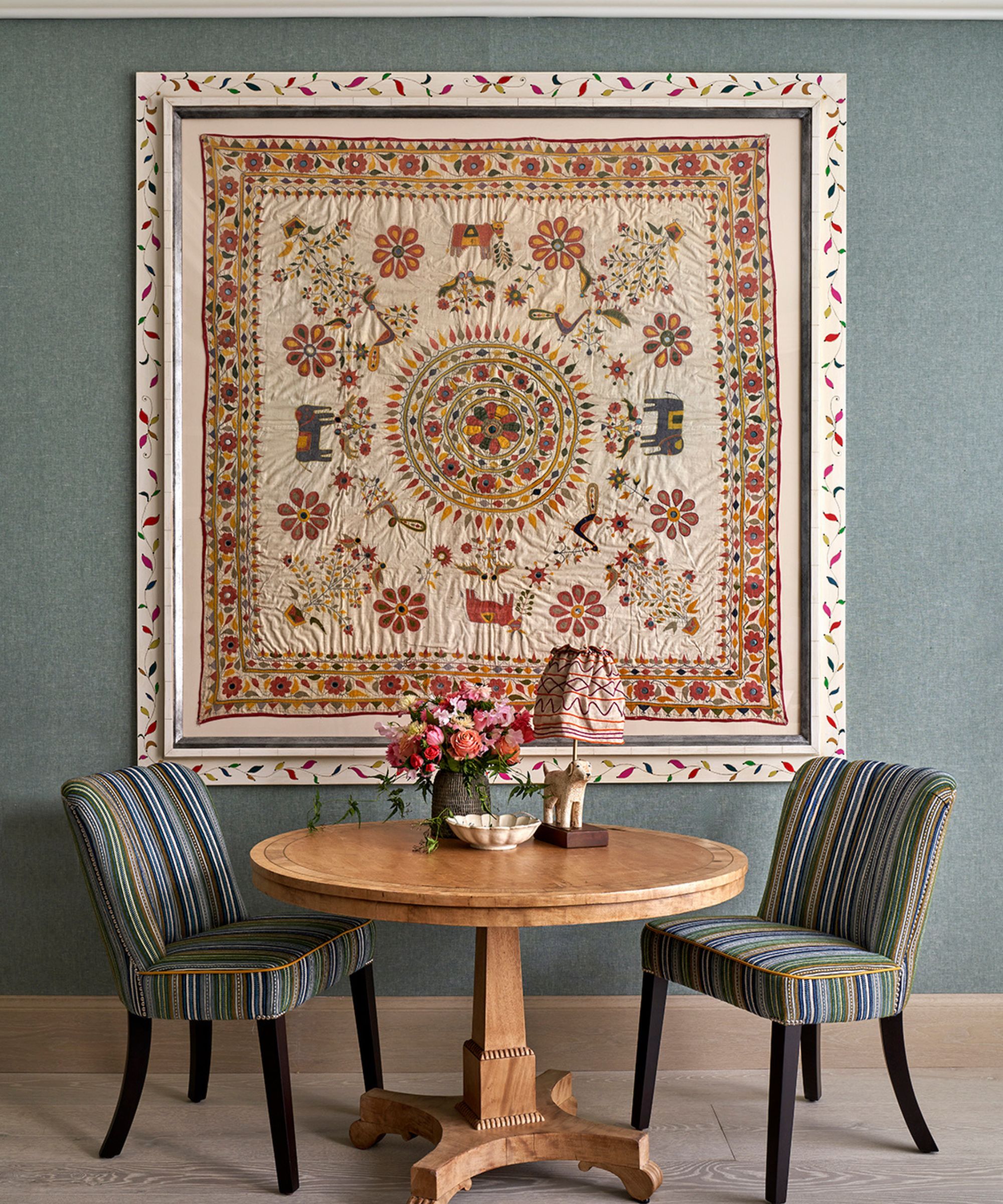
Whether mounted and framed on the wall or hung as a wall hanging behind a bed, vintage textiles make a fabulous alternative to traditional artwork as they add beautiful depth and texture to a room. Suzani textiles are particularly loved by interior designers for their vibrant colors, folksy patterns, and exquisite craftsmanship, plus they have a fascinating history and each is unique.
'Suzani textiles, are incredible hand-embroidered textile panels originating from nomadic tribes in Central Asian countries including Tajikistan, Uzbekistan, Kazakhstan which were crafted by brides and their mothers as part of a dowry, presenting them to the groom on their wedding day,' says interior designer Kit Kemp. 'Produced in vibrant color schemes of red, blue and green, these vivid creations traditionally feature vines, the sun and moon, flowers, leaves and pomegranates alongside geometric patterns to symbolize luck, protection, and prosperity.'
'I often incorporate Suzani patterns into schemes, their craft and brilliance bringing a human touch to an interior, infusing it with a sense of handcrafted beauty bringing historical significance to contemporary spaces,' adds Kit Kemp. 'At our Design Studio, we have long celebrated craft, and in particular, Suzani textiles within our work, collecting a variety of original Suzani textiles while on our travels which we have given the status they deserve, framing and displaying them as integral elements within our interior schemes.'
7. Go for a vintage suzani bedspread
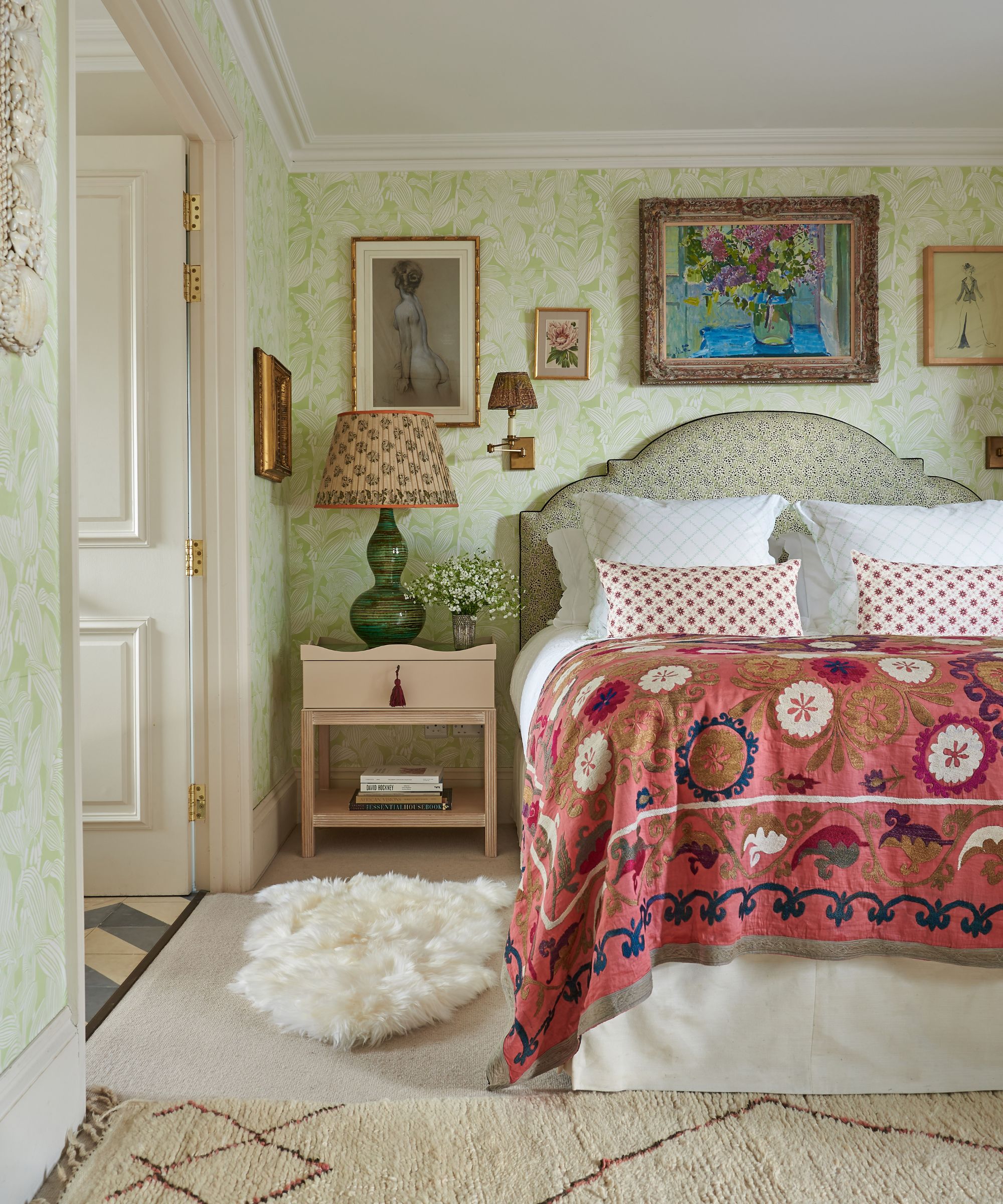
The interior, fabric and homeware designer, Sarah Vanrenen, is also a collector of Suzanis and loves to use them as bedspreads layered alongside smaller-scale prints.
‘I am constantly drawn to the rich and textured patterns of suzanis which can instantly be used to make sense of any scheme as there are so many different colors. They can suddenly bring together the room whether used as a bedspread, hanging from a pole on the wall, or to cover an ottoman or bedhead and, of course, cushions,' says Sarah.
8. Create a rustic look with vintage linens
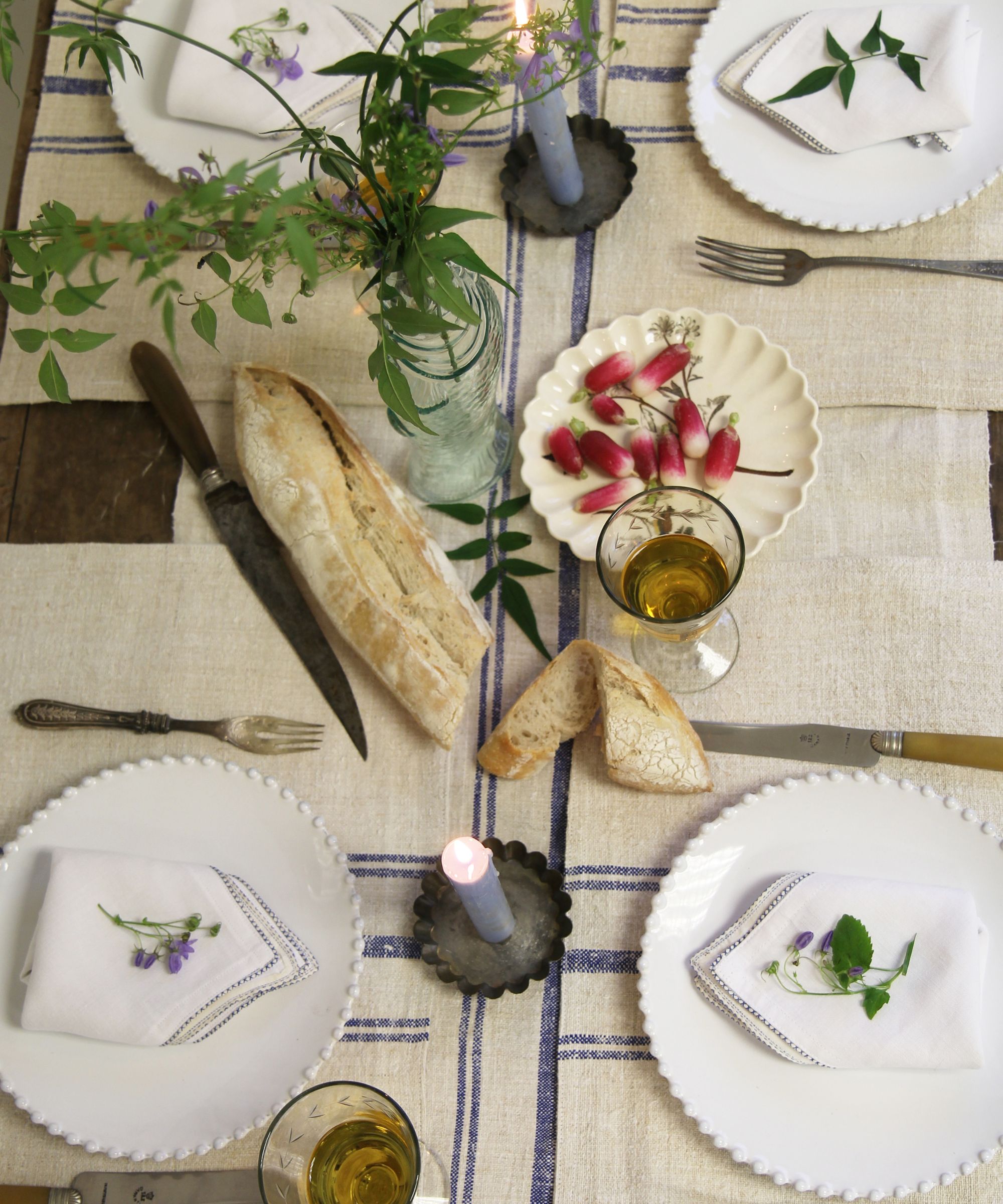
Many antique and vintage fabrics are highly decorative such as chintz, Indiennes and Toile de Jouy which is wonderful if you love the romantic look. However, if you're a fan of the more laid-lack style then why not go for some plain European linens? Boasting a rustic, slubby texture, vintage linens from France and Hungary are a stalwart of French country decor as well as the modern rustic look. British home brand Domestic Science offers an array of table linen and cushions made from authentic linen grain sacks.
'Everything about our grain sack linen collection represents exactly what we love at Domestic Science. Aesthetically, they’re typically pared back and in muted, faded colorways that feel relaxed, informal and easy to live with. But they also hold decades of stories. They are often from humble beginnings and were used by farmers to carry their grain to market,' says Libs Lewis, founder of Domestic Science.
'Early European grain sacks were handmade from flax right on the farms in which the fiber was grown. Most sacks were monogrammed with the owner’s initials or personalized with a unique design of stripes. These fabrics in particular would have been woven on little home looms with a specific household use in mind. Finding the beauty in functionality is what we’re all about.'
Decorating with vintage fabrics is an easy way to add some instant character and interest to your home. And they can be incorporated into pretty much any room too. Just be aware when hunting to look for pieces that aren't overly worn or distressed and will actually last once you get them home.

Pippa is a contributor to Homes & Gardens. A graduate of Art History and formerly Style Editor at Period Living, she is passionate about architecture, creating decorating content, interior styling and writing about craft and historic homes. She enjoys searching out beautiful images and the latest trends to share with the Homes & Gardens audience. A keen gardener, when she’s not writing, you’ll find her growing flowers on her yard for styling projects.